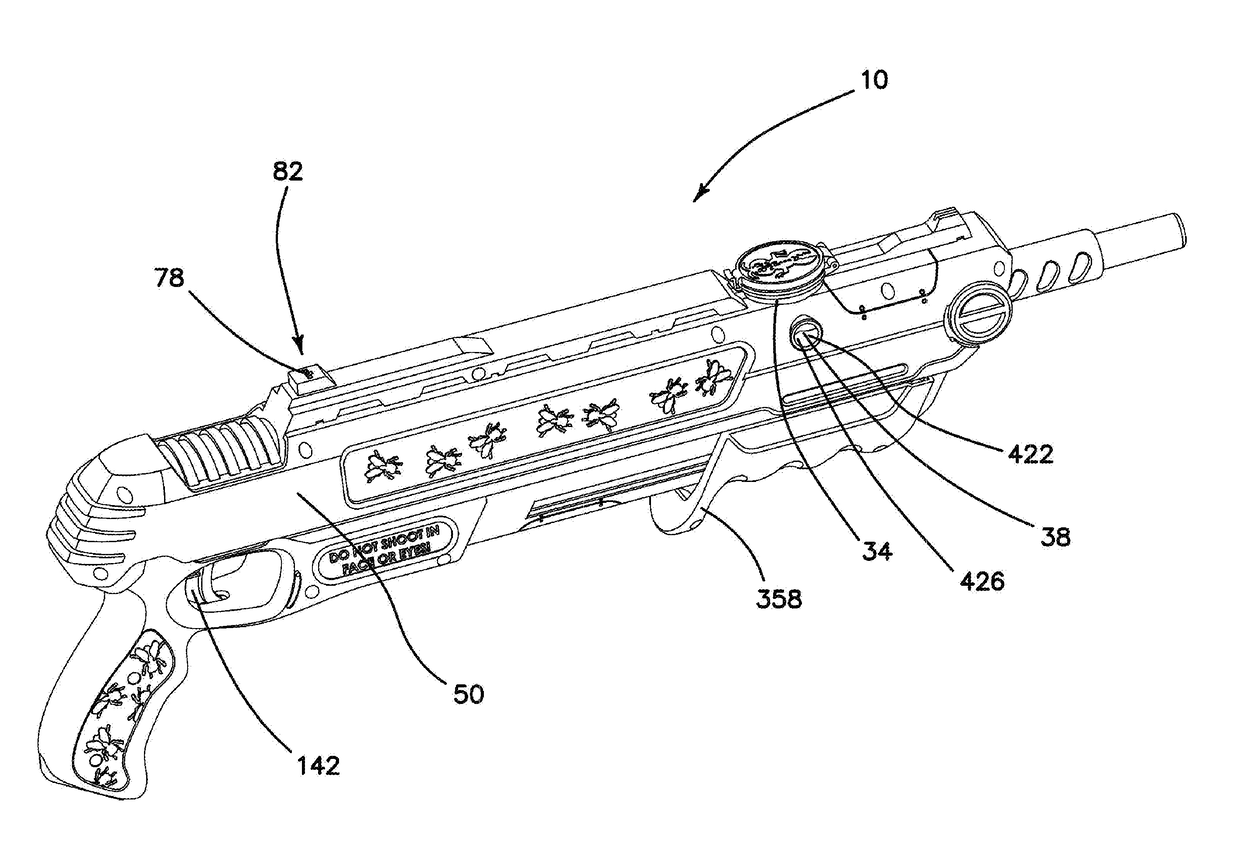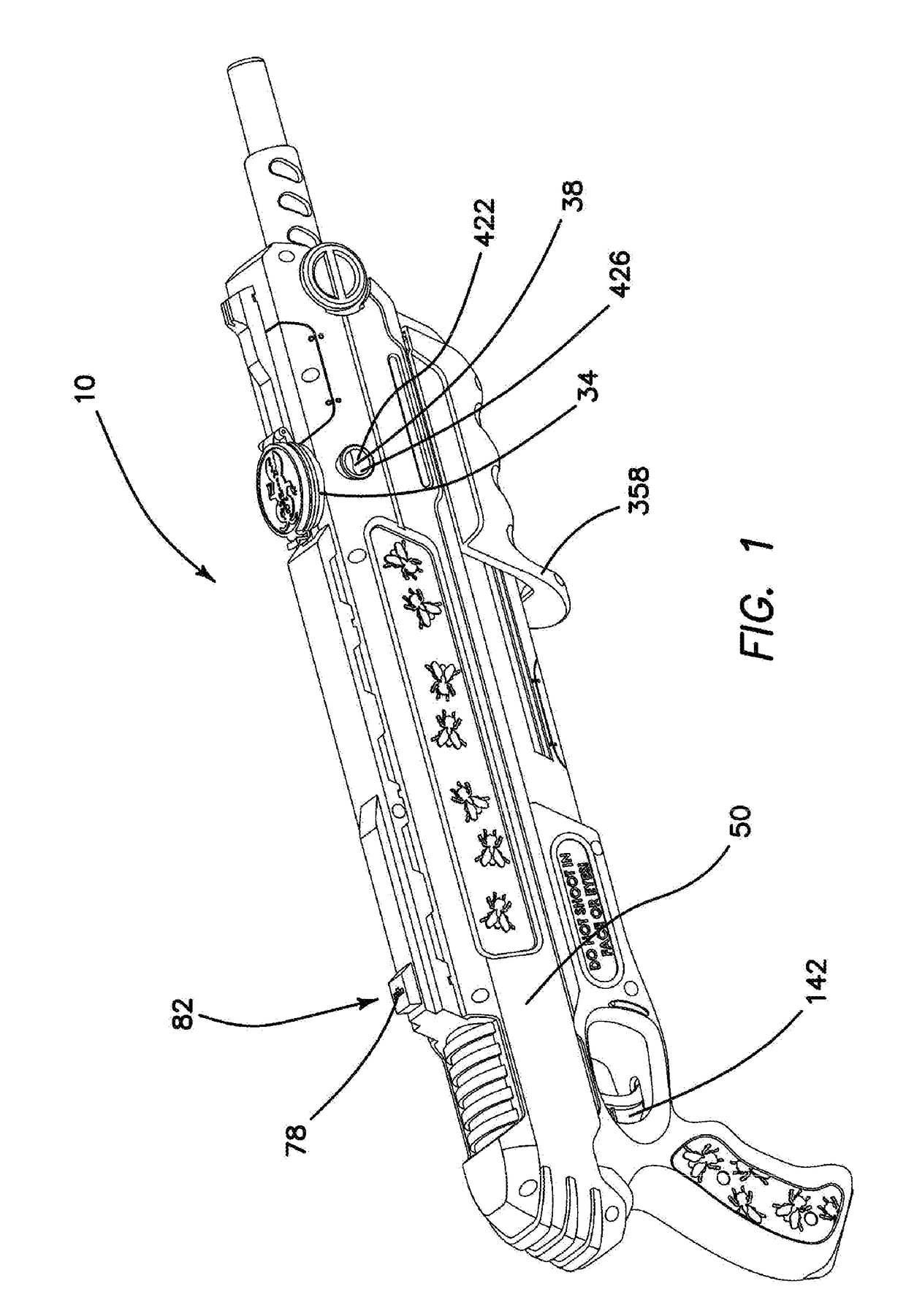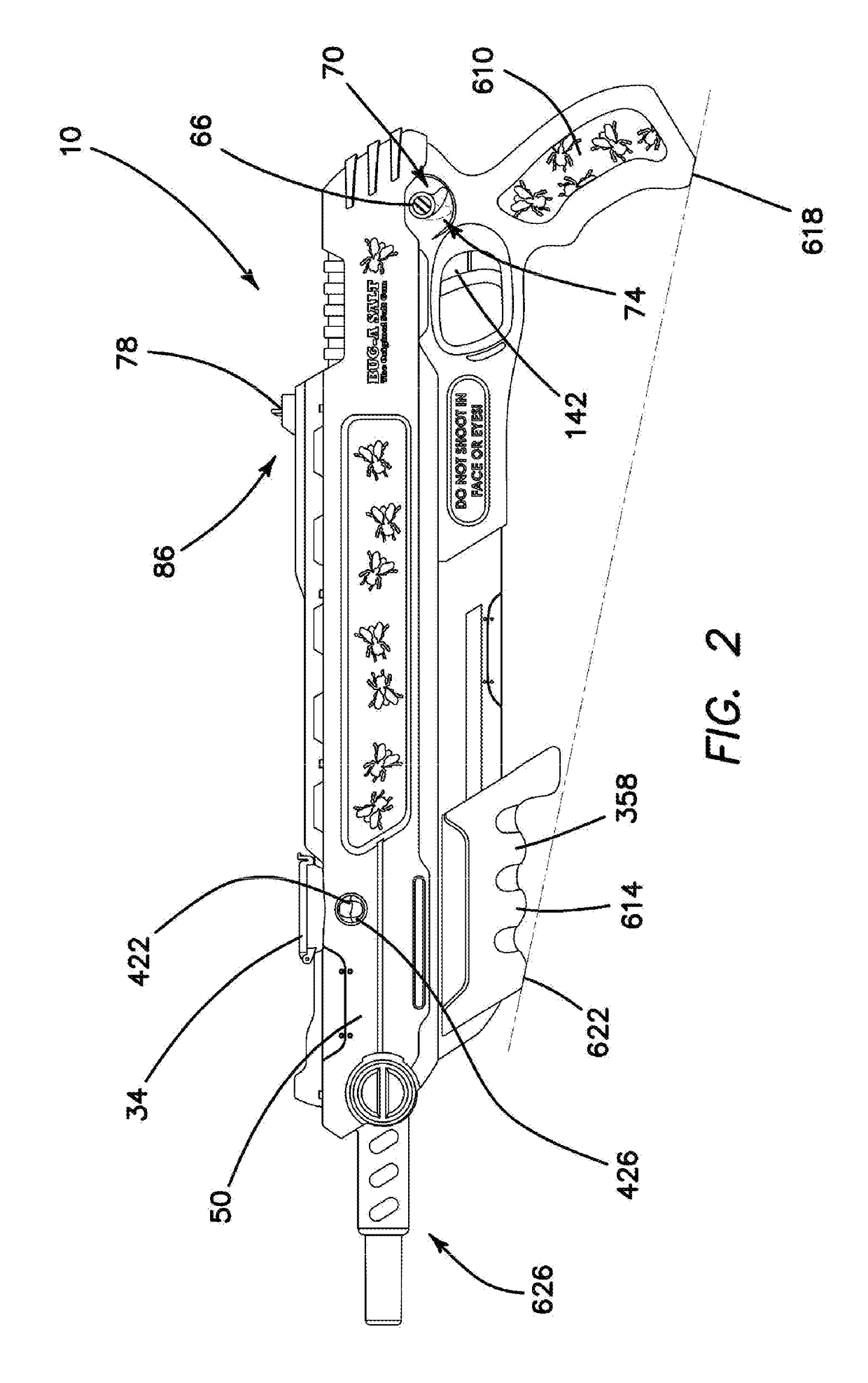Bug killing gun
a technology of bug-killing guns and bullets, which is applied in the field of bug-killing guns, can solve the problems of leaving potentially harmful chemical residues in the area where used, and achieve the effect of reducing the risk of infection
- Summary
- Abstract
- Description
- Claims
- Application Information
AI Technical Summary
Benefits of technology
Problems solved by technology
Method used
Image
Examples
Embodiment Construction
[0080](1) FIGS. 1-11 illustrate an improved bug killing gun 10 providing the desired features that may be constructed from the following components. As illustrated in FIGS. 10 and 11, a compressed gas source 14 is provided. A chamber 18 is provided. The chamber 18 is fluidly connected to the compressed gas source 14. A barrel 22 is provided. The barrel 22 is located at a distal end 26 of the chamber 18. As illustrated in FIGS. 5 and 6, a compressed gas release mechanism 30 is provided. The release mechanism 30 is connected to the compressed gas source 14. As illustrated in FIGS. 1-4, 10 and 11, a projectile storage magazine 34 is provided. The magazine 34 stores particulate projectiles 38 and is located adjacent the chamber 18. A projectile loading mechanism 42 is provided. The loading mechanism 42 moves the particulate projectiles 38 into the chamber 18 from the magazine 34. A cocking mechanism 46 is mechanically connected to the compressed gas source 14, the compressed gas release...
PUM
 Login to View More
Login to View More Abstract
Description
Claims
Application Information
 Login to View More
Login to View More - R&D
- Intellectual Property
- Life Sciences
- Materials
- Tech Scout
- Unparalleled Data Quality
- Higher Quality Content
- 60% Fewer Hallucinations
Browse by: Latest US Patents, China's latest patents, Technical Efficacy Thesaurus, Application Domain, Technology Topic, Popular Technical Reports.
© 2025 PatSnap. All rights reserved.Legal|Privacy policy|Modern Slavery Act Transparency Statement|Sitemap|About US| Contact US: help@patsnap.com



